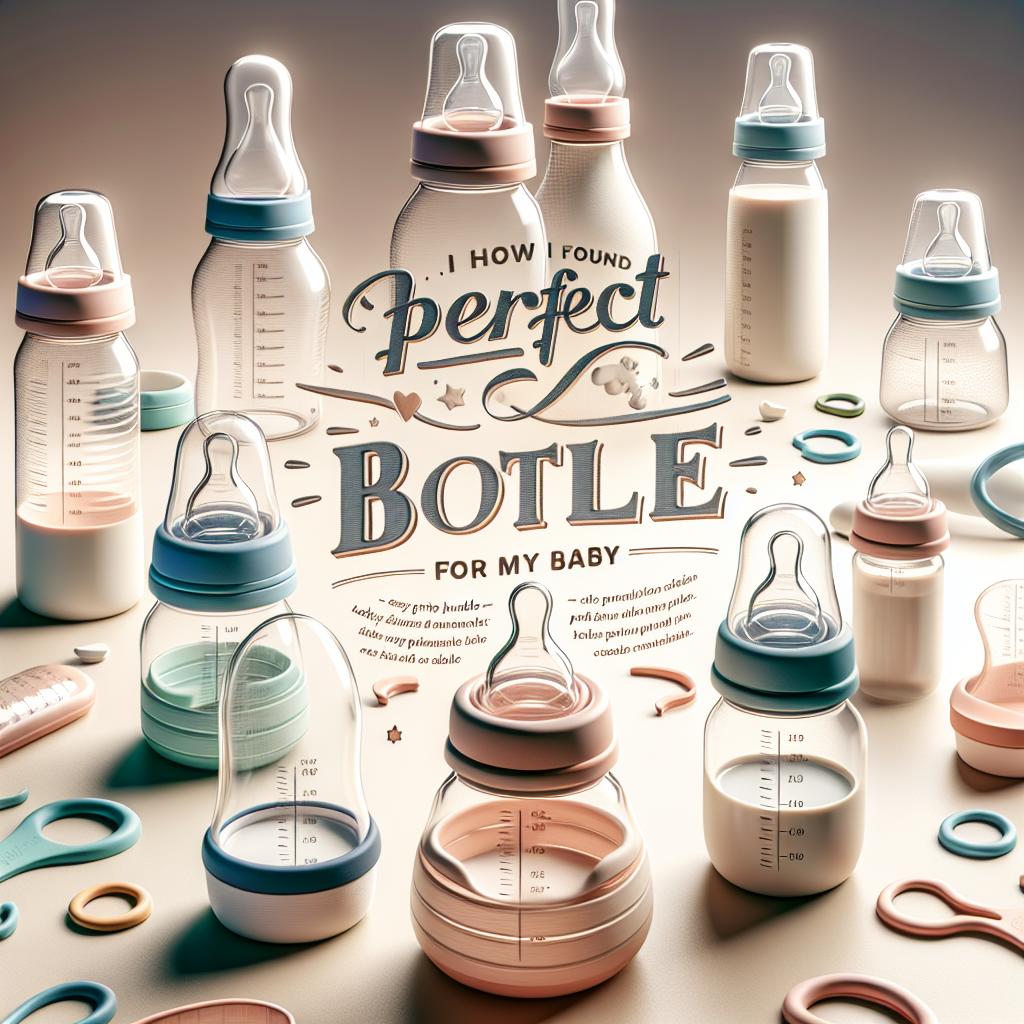Bottles and Bonding: Creating Calm Feeding Moments
How to Achieve Bottles Calm Feeding
When it comes to nurturing your baby, feeding time is one of the most crucial periods. This session not only deals with meeting the nutritional needs of your little one, but it is also a unique opportunity to form a deep and secure bond. While breastfeeding holds its benefits, bottle-feeding should not be undermined. According to Healthline, bottle-feeding can be just as bonding as breastfeeding. (Feed Guide also offers a comprehensive guide on how to enjoy calm and peaceful bottle-feeding sessions.)
To achieve bottles calm feeding, here are some steps to keep in mind:
- Create a soothing environment: A calm and quiet environment is conducive for peaceful feeding sessions. This can be achieved by reducing noise and visual distractions.
- Hold your baby close: Physical contact is vital for bonding. Holding your baby close during feeding can create a sense of security and promote emotional connection.
- Make eye contact: Maintaining eye contact during feeding communicates love and interest, contributing to a stronger bond.
- Patiently respond to cues: Babies have their way of communicating hunger or satisfaction. Responding patiently to these signs can make feeding more comfortable and enjoyable for both.
Choosing Soothing Bottles for Seamless Feeding
The right equipment can make a significant difference in your feeding experience. For bottle-feeding, choosing soothing bottles that mimic the natural breastfeeding experience can ease the transition and make the process more comfortable for your baby.(Here’s a helpful guide to facilitate a calm transition from breast to bottle.)
When selecting bottles for your baby, consider:
- The bottle’s material: Always opt for BPA-free bottles to ensure safety.
- The nipple design: Choose a design that closely resembles the natural shape and feel of the breast to help your baby latch on easily.
- The flow of milk: The bottle should allow a steady, controlled flow to prevent choking or excessive air intake.
- Ease of cleaning: Hygiene is key in feeding. Opt for bottles that are easy to clean and sterilise.
Bonding through Bottle-Feeding
Bottle-feeding isn’t just a task for mothers. Fathers, grandparents, or siblings can also partake in this nurturing duty, facilitating bonding and relationship building. According to Organic Life Start, there’s a special role for dads in formula feeding which provides an opportunity for them to bond with their infants.
Remember, successful bonding isn’t a result of the kind of feeding but the way it is done. With love, patience, and dedication, bottle-feeding can be a beautiful opportunity for creating calm and bonding moments with your little one.
The Impact on Long-Term Attachment
Research indicates that bottle-feeding doesn’t impact the secure attachment between parent and child. As Developmental Science indicates, secure attachment is built through responding to your baby’s needs, which can be achieved through both breastfeeding and bottle-feeding.
Meta Title: Bottles and Bonding: Making the Most of Calm Bottle-Feeding Moments
Meta Description: Discover how to create a nurturing, calming environment during bottle-feeding sessions, choose soothing bottles for your baby, and use this time as a bonding opportunity. Learn how your feeding method doesn’t impact secure attachment, and how bottle-feeding can be a beautiful bonding experience.
Bottle-Feeding Techniques
Bottle-feeding your baby doesn’t entail simply sticking a bottle into their mouth. An appropriate technique can ensure that the process is comfortable and fulfilling. OrganicBabyFood24 offers a guide on bottle-feeding techniques and how to get it right.
Here are some methods for an effective bottle-feeding session:
- Adequate Support: Ensure your baby is properly supported during feeding. Their back should be slightly reclined, and their head raised to avoid choking or discomfort.
- Correct Bottle Position: The bottle should be held at an angle so that the entire nipple is filled with milk, reducing the risk of air ingestion.
- Pace Feeding: Pace feeding allows the baby to control the flow of milk, encouraging digestive health and preventing overeating.
- Burping: Burp your baby after every feeding to release any swallowed air, reducing discomfort and colic.
Building Bonds Beyond the Bottle
Bottle-feeding time can lead to creating more than just that important parent-baby bond. This feeding method allows other family members to take part in the feeding process, fostering relationships between the baby and more extensive family.
This bonding activity is not restrained to mothers alone. On the contrary, it provides a fantastic opportunity for fathers to bond with their babies. A discussion in the BeyondTheBump subreddit shares experiences of fathers creating solid bonds with their infants through bottle-feeding.
Bottle-feeding and Bonding: Dispelling Misconceptions
Some parents might be concerned that using a bottle might disrupt the bonding process, but nothing could be further from the truth. KidsHealth reassures that bonding is not purely about feeding methods, but rather the consistent emotional involvement and caring for the baby’s needs.
With parents increasingly receiving misinformation about feeding practices, it’s essential to dismiss these myths concerning bonding and bottle-feeding. The NCT provides practical tips for bottle-feeding your baby, focusing on the significance of interaction during feeding time.
Final Thoughts
Bottle-feeding is a wonderful and legitimate form of nurturing your baby. It allows both parents to partake in the feeding process, strengthening bonds with your baby. It’s crucial to select appropriate bottle types and feeding techniques to ensure calm and soothing feeding instances.
Remember, the real essence of bonding comes from the love and care you provide and not merely the feeding method. It’s these moments full of care and attention that will leave lasting memories and form strong emotional ties with your precious one.






